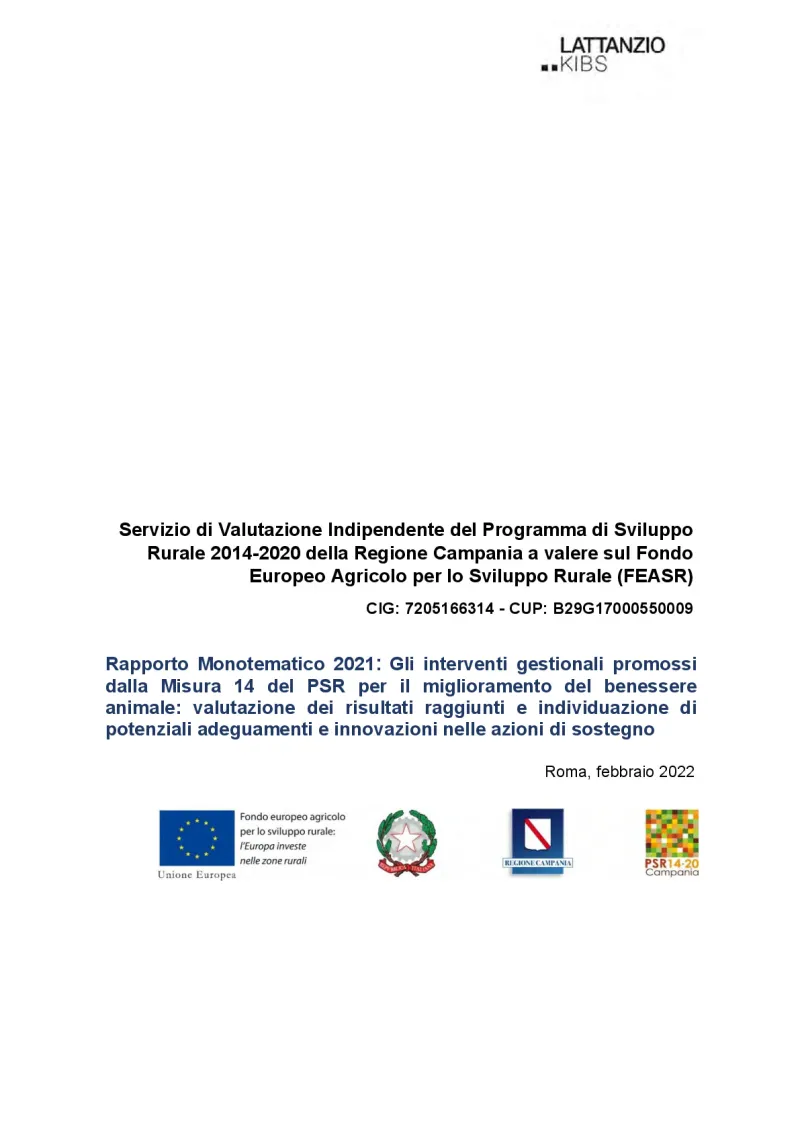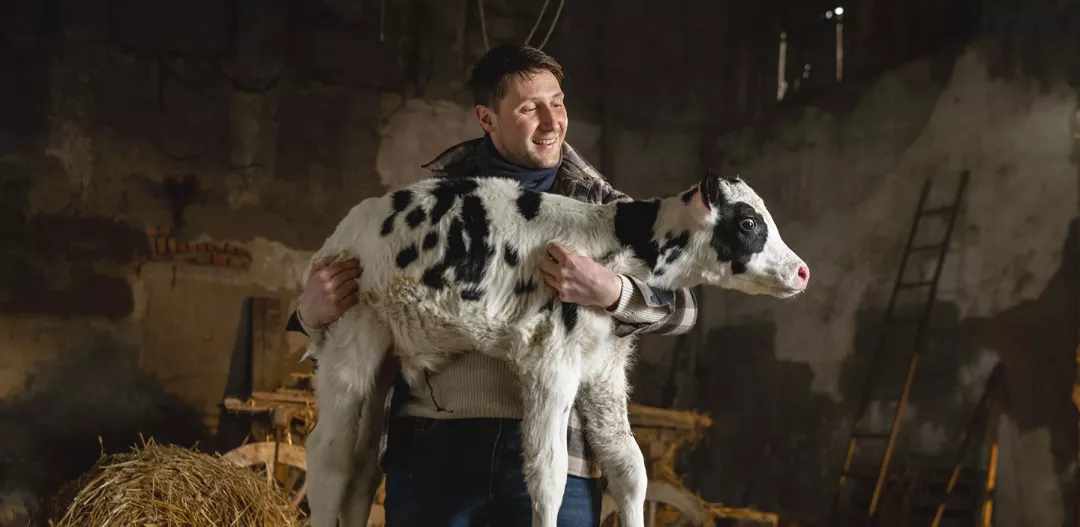Management actions for the improvement of animal welfare
This evaluation is carried out in the framework of the 2014-2020 Rural Development Programme of the Campania region and covers the implementation of Measure 14 (animal welfare) during 2020.
- Italy
- 2014-2022
- Sectorial impacts


The scope of the evaluation is to analyse the implementation and effectiveness of the interventions implemented in 2020 under Measure 14 of the 2014-2020 RDP for the improvement of animal welfare in livestock farms.
The analysis focused on:
1) The evaluation of the effectiveness of the measure in relation to its objectives.
2) The identification of potential improvements/adaptations to the strategy of intervention and related implementation tools. This can be adopted in the two-year extension period (2021-22) of the RDP and/or used in the programming of agricultural policy for the 2023-27 period.
The evaluation is structured around seven evaluation questions.
The methodological approach combines quantitative analysis (e.g. statistics, monitoring data, etc.) with qualitative analysis of information and opinions (e.g. expert consultation, surveys, field case studies e.g.). The work carried out is organised into four main phases:
- Quantitative analysis of secondary data (e.g. regional monitoring system, data from official statistics etc.) of the interventions and beneficiaries of Measure 14.
- Presentation of the interventions implemented with Measure 14 and definition of sources/methods for the evaluation of their effects, based on the contribution and judgement of experts.
- Surveys to farmers participating in Measure 14 (including six farm case studies) and a counterfactual analysis.
- Overall interpretation of the results of the analyses and formulation of proposals for improvement, based on the contribution and judgement of experts.
The main limitations are linked to the selection of a non-random sample, which gave priority to holdings benefiting from two or three (in the case of buffaloes) actions under Measure 14 while favouring one specific action that seems to determine the major changes in the management of the herd. According to the evaluators and the consulted experts, this methodological choice probably reduced the representativeness of the samples. This may have resulted in an overestimation of the positive outcomes of Measure 14 and an underestimation of the implementation issues that prevented less structured farms from fully participating in all the available actions under Measure 14.
Concerning the participation of farmers to Measure 14 (and to other RDP measures), the evaluation concludes that, compared to the region, there was a relatively high participation of dairy buffalo farms, followed by dairy cattle farms. These are located in the plain areas of the provinces of Caserta and Salerno, generally of medium-large size, more structured and advanced from a technical and management point of view, and they are in contact with professional experts that inform and orient the breeder to adhere to the measure. Highest participation is observed in the case of the action related to advanced health prophylaxis (action C), followed by the action concerning natural breastfeeding in buffaloes (action B), while relatively lower is the participation to the action focusing on minimum spaces (action A). The latter requires adequate structural conditions and causes deeper changes in the management of the herds. Less important is the participation of beef cattle/buffalo farms as well as of sheep and goats and poultry farms mainly located in mountain areas, which are often smaller and technologically weaker.
This 'dualism' in the participation to the measure is, in part, the consequence of poor development or effectiveness of information activities towards the aforementioned sectors or weaker farm typologies and less informed breeders.
The evaluation also concludes that the beneficiaries of Measure 14 do not participate highly in other measures of the 2014-20 RDP. The appropriateness of RDP support to tangible or intangible investments complementing the participation in Measure 14 (in particular for minimum space action) is not generally taken into account.
Concerning the evaluation of the effects of Measure 14, the results of the surveys do not show any significant changes in the management of the animals and the organisation of the livestock following adherence to the measure, especially in the case of action C (advanced health prophylaxis). More important changes are observed in the case of farms adopting action B related to natural breastfeeding in buffaloes and above all in action A concerning minimum outdoor spaces, which affected a smaller share of buffalo herds and dairy cattle.
Farmers' opinions on the effectiveness of commitments in promoting animal welfare and health conditions are overall positive. Fewer surveyed farmers (around 50%) rate the measure's positive impact on productivity and production quality as 'high'.
Finally, the evaluation highlights that the experts consulted have a more articulated and critical judgment concerning the effectiveness of the measure. The 'educational' role played by the measure in increasing beneficiaries' awareness of animal welfare and the introduction of new management approaches is recognised. However:
- - the measure still affects a limited number of farms, especially in some typologies of livestock or territories (reduced regional impact);
- - there is a lack of a clear and shared definition of the concept of ‘animal welfare’ as well as the link of potential causality between proposed actions, animal welfare and livestock productivity; and
- - there is a lack of methods and tools to assess the effectiveness of commitments related to animal welfare objectives necessary to justify the provision of public support to the community and inform and guide farmers in the management, improvement and development of their businesses.
Author(s)
Lattanzio KIBS
Resources
Documents
Management actions for the improvement of animal welfare
(PDF – 2.54 MB – 121 pages)